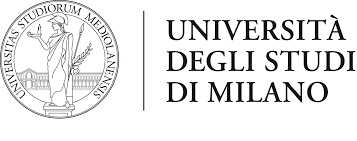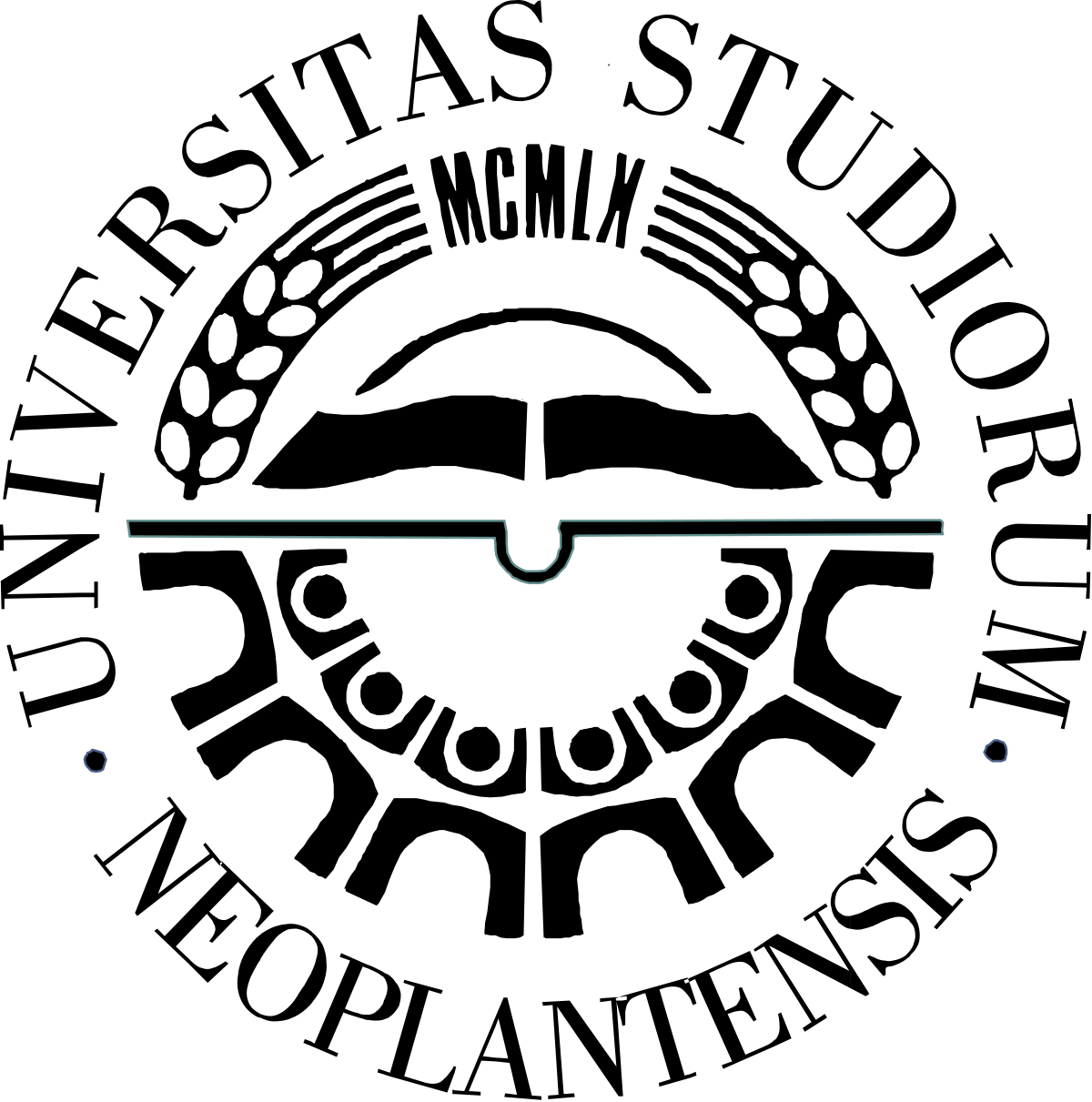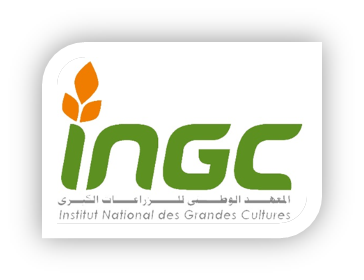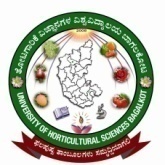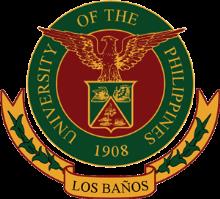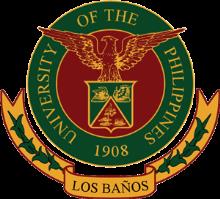Day 1 :
- Agriculture and Food Security | Organic Farming | Agricultural Biotechnology | Food Analysis, Nutrition & Dietary Management | Food Security: The Rising Crisis and Its Management | Advances in Food Science and Technology| Food and Agricultural Waste Management | Food Microbiology and Food Safety | Soil & Water Management | Agricultural Production Systems & Rural Agribusiness | Nutraceuticals and Functional Food
Location: Wansee
Session Introduction
Kleopatra Chira
University of Bordeaux, France
Title: Malolactic Fermentation in Barrel or in Steel Tanks

Biography:
Kleopatra Chira has completed her PhD from the Faculty of Oenology in Bordeaux University. She worked as Postdoctoral researcher for CIVB (Conseil Interprofessionnel du Vin de Bordeaux) and after for Nadalié cooperage. Since 2011, she is responsible for Research and Development of Nadalie cooperage and works like an Associate Researcher at Institut des Sciences de la Vigne et du Vin in Bordeaux University. She has published more than 25 papers in reputed scientific and technical journals and 46 papers/abstracts in international and national conferences.
Abstract:
Winemaking process must involve alcoholic fermentation, often followed by malolactic fermentation (MLF). Once MLF is completed, wine is subjected to clarification and stabilization treatments and is stored for aging in oak barrels. MLF and oak aging are two oenological processes which modify wine composition and sensory characteristics. MLF results in better balanced wines due to an acidity decrease and moreover, prevents microbial spoilage and improves wine's organoleptic profile by odor-active compounds production and the transformation of both grape and yeast derived volatile compounds and flavor precursors. Concerning oak wood aging, physicochemical reactions occur such as wood components extraction and interactions between wood components and wine. Wine composition is modified due to the wood extracted compounds and due to chemical reactions that take place when oxygen passes through wood pores or staves. Up to now, these processes are more familiar to red wine whereas scarce scientific research has been performed for the white. Using specific sample preparations, spectrophotometric methods, HPLC, GCMS and LCMS detection parameters and sensory analysis, red wines having realized MLF in barrel presented a greater amount of the principal oak wood aromatic compounds. Concerning sensory results, when MLF took place in barrels strengthened wine organoleptic preference and overall woody aroma was more integrated within the whole aromatic bouquet. As far as white wines are concerned, MLF realization in barrels did not change the perception of main aromas neither aromatic intensity and persistence nor mouthfeel volume or bitterness and did not confer higher overall woody aroma which may mask wine fruity character.
Federico Sambo
Università degli Studi di, Italy
Title: LIFE VITISOM. VITiculture Innovative Soil Organic Matter Management: variable-rate distribution system and monitoring of impacts

Biography:
Federico Sambo, after having worked for several years in the viticultural and oenological fields, enrolled in the master degree in viticulture and oenology at the universities of Milan and Turin in 2015. After the end of his studies, right after his master graduation, he begin to work in the viticulture research team, lead by professor Leonardo Valenti. Nowadays he is the Junior researcher of LIFE Vitisom in charge of the experimental fields and the microvinifications of the project.
Abstract:
Nowadays vineyard soil is subject to an increasing organic matter erosion in relation with the transition to intensive farming systems which generates a reduction of row spacing and a fast evolution of vineyard mechanization. Soil erosione leads to a decrease of organic matter content whose the importance for viticultural soils is already known since a long time and it has recently been mostly enhanced in relation to the progress of knowledge linked to the soil study. In particular, the positive function of the organic matter on soil is related to:
a: general improvement of the conditions of fertility, since the organic matter represents a source of stable nitrogen which constitutes a pool of elements for the vine;
b: positive effect on soil structure, water retention and availability of nutrients;
c: an improvement of the structure and the chemical, physical and biological properties of soil.
The LIFE VITISOM project aim to produce and make available an innovative technology, which could be utilized in all viticultural European contexts. Thanks to the adoption of variable rate system technology (VRT) the prototypes produced thanks to VITISOM project will allow to make more rational the use of organic fertilizer in viticultural sector at local, national and European level.
Franz-Theo Gottwald
Humboldt University Berlin/Schweisfurth Foundation Munich, Germany
Title: Food Sovereignty versus food security? How to overcome an agropolitical controversy

Biography:
Franz-Theo Gottwald studied theology (Dipl. Theol.), Indology, social science and philosophy with a Ph.D. in 1982. Currently he is director of the Schweisfurth Foundation for sustainable development of agricultural and food businesses. Prof. Gottwald is lecturing on agro, food-, environmental- and bioethics at Humboldt University Berlin.He is Chair of the Consumer Commission of the Bavarian State Ministry of the Environment and Consumer Protection and member of the Food Safety Advisory Board. Fields of interest: Business Ethics, sustainability along the food chain, consciousness research, future studies. Author of numerous books and articles on agriculture, education, environmental and food ethics.
Abstract:
The term food sovereignty has its roots in the association Via Campesina, a group of peasants and farmworker organizations. By now, a multitude of NGOs and farmer unions support this concept for a sustainable supply for an increasing global population. While food security describes the state in which all human beings would have economically and bodily access to safe and nutritious food at all points of time, for food sovereignty the necessary nutrition for an active an healthy life would be assumed, as well as the free choice of food based on culturally grown or individually preferred diets and food patterns (FAO 2006) (Windfuhr & Jonsén 2005).
To establish food sovereignty globally legal requirements would somewhat differ from the current politics and policies: local markets and an exchange of goods between local producers and local consumers would be necessary to decrease prices and increase sovereignty. Furthermore, selected staple food for a healthy alimentation for all citizens would need to be subsidized (for last practice see Below Horizente’s Food Security Policy.
An “either…or” becomes redundant, to think inclusive fundamental: increase in production and food sovereignty, shape green revolution and ecological intensification. One prerequisite for this development addresses molding the direction of future market structures legally and ethically – regarding technique, patents, soil, and consumer rights, as well as animal welfare plus environmental and landscape protection. Most urgently established power asymmetries have to be shifted and superseded for harvesting the benefits of food sovereignty in combat for hunger.
Ivana Dmini Rojni
Polytechnic of Rijeka, Croatia
Title: Scaphoideus titanus Ball and control measures

Biography:
Viticulture represents a significant economic branch in the Istrian peninsula (Croatia). The leaf hopper Scaphoideus titanus Ball is the univoltine and monophagous vector of Flavescence dorée phytoplasma (FD) which is considered as a quarantine pest in several countries due to its epidemic character and high economic loss it provokes. There are only preventive control measures against FD: the use of pathogen-free propagating material, hot water treatment of propagating material, removal of infected or suspected vine plants as well as control of S. titanus, which can be efficiently done by insecticide treatments. According to the legislation of the Ministry of Agriculture in Croatia (NN 46/2017), it is obligatory to carry out two treatments against the S. titanus in demarcated areas (infected and security). The third treatment is obligatory if the number of adults is above the threshold of harm. In preliminary investigations the difference in appearance of S. titanus between years and locations has been found. This knowledge has affected the determination of precise deadlines for control measures. Regular monitoring of S. titanus and FD, educating and informing producers of protection is an important step in the development of a protection strategy within sustainable and ecological grape and wine production.
Abstract:
Ivana Dminić Rojnić completed her PhD at Zagreb University, Faculty of Agriculture in 2013. She works at the Polytechnic of Rijeka, Department of Agriculture as a Professor of courses in plant protection. She has published scientific and professional papers in renowned journals and has been involved in several scientific and professional projects. Her current research interests are integrated pest management (IPM) in Mediterranean crops. The overall research emphasis is focused on the development of safe, effective and economical methods of IPM and the biological/ecological interactions relating to insect species and their environment. She is currently focusing on grapevine and olive pests.
Branimir Pavlić
University of Novi Sad, Serbia
Title: Concept of utilization of sage herbal dust as raw material for recovery of polyphenols and terpenoids

Biography:
Branimir Pavlić has completed his PhD from University of Novi Sad, Faculty of Technology, Serbia. His fields of research are utilization of crops, food industry byproducts and agricultural waste for recovery of bioactive compounds for application of food or pharmaceutical sector, research and development of novel extraction techniques and mathematical modeling of extraction process. He has published more than 35 papers in well-known journals in the field of chemical engineering, agriculture and food science. He is working as Assistant Professor at the Department of Biotechnology and Pharmaceutical Engineering at the same university.
Abstract:
The main aim of this work was valorization of sage (Salvia officinalis L.) byproduct from filter-tea factory for recovery of high value extracts with desirable properties for application in food, cosmetics and pharmaceutical products. Conventional (maceration) and novel (ultrasound-assisted, microwave assisted and subcritical water extraction) extraction techniques were applied for polyphenols recovery. Ethanol concentration was optimized in maceration process, while experimental design and response surface methodology were applied for optimization of novel extraction techniques. Polyphenols yield and antioxidant activity responses were investigated. Influence of main process parameters was determined for each technique by ultrasound assisted extraction (temperature, extraction time and ultrasonic power), microwave assisted extraction (ethanol concentration, extraction time and sample-solvent ratio) and subcritical water extraction (temperature, extraction time and HCl concentration in solvent). Liquid extracts obtained by novel extraction technique exhibited higher antioxidant activity and also provided higher polyphenols yield comparing to extracts obtained by maceration. Soxhlet extraction, hydro distillation and supercritical fluid extraction (SFE) were applied for terpenoids recovery. SFE was optimized by response surface methodology and optimal conditions were pressure of 290 bars, temperature of 55°C and CO2 flow rate of 0.4 kg/h. The most abundant compounds in lipid extracts and essential oil were oxygenated monoterpenes (α-thujone and camphor), oxygenated sesquiterpenes (viridiflorol) and diterpene polyphenols (epirosmanol). Sage liquid extracts obtained by conventional and novel extraction techniques were spray dried in order to obtain dry extract form. Physico-chemical properties (chemical profile, moisture content, hygroscopicity, rehydration time, WAI and WSI) and biological activity (antimicrobial and antioxidant activity) were determined in dry extracts and their potential application in food and pharmaceutical formulations was discussed.
Seema Sonkar
Chandra Shekhar Azad University of Agriculture and Technology, India
Title: Food Policy and their implementation towards Food security in India

Biography:
Seema Sonkar joined as Assistant Professor in the Chandra Shekhar Azad University of Agriculture & Technology, Kanpur. Her area of specialization includes food nutrition, clinical nutrition, dietetic food, micronutrients, and therapeutic nutrition. She has guided 35 MSc student theses as a major guide and more than 40 students of MSc as a co guide, five student of PhD as co guide. She attended ten national, five international conferences in India and presented paper in international conference at Malaysia, Poland and Germany. She has published three books, four manuals, one project from state government and has received award in excellence in teaching and young scientist award
Abstract:
The World Health Organization has proposed the theoretical framework of social determinants of health to research and take action to reduce inequities in health status across regions, countries, groups and social classes. The farming sector offers one of the highest impacts on reducing poverty and hunger. Great potential for achieving sustained improvements in the nutrition status of the poor. Economic inequality in the distribution of wealth or income continues to be a very serious problem for any community. How much does a poor man’s meal cost? Earlier the planning commission had shown the latest data of poverty ratio falling spectacularly from 37% in 2004-2005 to 22% from 2011 to 2013. This raised 138 million people above extreme poverty which is one of the greatest poverty-reducing feasts in history. But the poor are supposed to get highly subsidized food. Economic inequality can be measures of which two are very popular and convenient inequality measures in any family may be of three types- relative, absolute and index measures of inequality. If we really want to reduce inequality, we should consider both relative and absolute measures of inequality. Food policy of the government of India after independence, the government took the problem of shortage of food grain seriously, that’s why several measures have been taken by the government to solve the problem.
Dana Alina Magdas
National Institute for Research and Development of Isotopic and Molecular Technologies, Romania
Title: Wine authentication using spectroscopic techniques in conjunction with chemometry

Biography:
Dana Alina Magdas has completed her PhD at Babes-Bolyai University, Cluj-Napoca. She is Head of Mass Spectrometry, Chromatography and Applied Physics from National Institute for R&D of Isotopic and Molecular Technologies, Cluj-Napoca, Romania. She has published more than 60 papers in reputed journals and coordinates research projects and contracts with industry, in the field of food and beverages authenticity and traceability.
Abstract:
Now-a-days food and beverages authentication using rapid and non-expensive analytical tools represents an important challenge. From all investigated matrices, wine represents one of the commodities that benefit from an enhanced attention. Thus, for wine discrimination during the last years, different techniques in conjunction with chemometry was successfully proposed and applied. Studies involving vibrational spectroscopies (NIR/IR, Raman/SERS), corroborated with statistical treatment were reported to be utilized efficiently for wine classification. Besides these techniques, other analytical methods which proved their efficiency in wine classification are given by nuclear magnetic resonance profiling, 1H NMR and fluorescence spectroscopies through which outstanding wine classifications were previously obtained. In this light, the present work presents a comparative study concerning the potential of Raman, 1H NMR and fluorescence spectroscopies in conjunction with chemometry, for wine classification with respect to variety, geographical origin and vintage. For all classification types discrimination percentage of better than 90% was obtained in both, initial and cross-validation step. Apart from this, the potential and limitations of each of these techniques will be discussed.

Biography:
Mohamed Jadlaoui has completed his Master degree in Mechanical Engineering and Agro-Industries from Higher School of Rural Equipment Engineers, Tunisia. He is a Chief Engineer working as Head of Agricultural Machinery and Irrigation Service at the National Institute of Field crops, Public sector. He has participated in oral communication and posters in several international and national seminars.
Abstract:
Today, one of the main global challenges is how to ensure food security for a world growing population whilst ensuring long-term sustainable development. According to many of the loss studies in the world, we have numbers and results that always show an increase in loss at the harvest level. This means that an alert must be made urgently. Our objectives were to estimate and calculate this loss (pre-harvest and harvest) and to see some initiatives to reduce the loss of mechanization. Some old studies in Tunisia showed that the mean of loss was more than 12% (pre-harvest and harvest due to machine). Logically, this number should be considered as a very high amount and out of the acceptable range. Harvesting delay and unadjusted combines considered the most causes of crop loss. However, combine adjusting is not the only factor to reduce loss. Many factors, such as combine abrasion or management and planning factors are affecting crop loss. Time of harvesting, seed moisture content, weather relative humidity, field topography, correct combine performance and crop characteristics identification are affecting crop loss reduction. Loss of pre-harvest and harvest is part of a values chain and also most importantly to reduce other sources of losses such as storage and transport.
Paulo Carteri Coradi
Federal University of Santa Maria, Brazil
Title: Traceability, food safety and quality of corn grain in post-harvest and storage for the production of poultries in Brazil

Biography:
Paulo Carteri Coradi holds a Bachelor's degree in Agricultural Engineering at Federal University of Pelotas (2005), Master's Degree in Agricultural Engineering at Federal University of Lavras (2006) and a PhD in Agricultural Engineering at Federal University of Viçosa (2010) and Kansas State University, USA. He is a Post-doctor in Engineering of Post-Harvesting of Agricultural Products at Federal University of Viçosa (2012). Since 2011, he is working as Adjunct Professor at the Federal University of Santa Maria (UFSM), coordinator of the Agricultural Engineering Undergraduate Program and serves as Permanent Professor at the Postgraduate Program in Agricultural Engineering at UFSM. He is a member of the Editorial Board of the Brazilian Journal of Agricultural Engineering, and reviewer of scientific journals. He has experience in the field of agricultural engineering, with emphasis on engineering of processing and technology of post-harvesting of agricultural products
Abstract:
In the Brazil, the corn is the most widely used raw material in poultry diets as energy source, however, their production does not occur all year round and it is necessary to store some of the grain during the off season to have sufficient raw material for feeding the animals. The regions with the highest grain production of corn in Brazil presented with extreme weather conditions that can be decisive for the product quality in the storage. The aim of this study was to evaluate the post-harvest effects of corn grains during storage at different temperature and relative humidity conditions, characterizing different Brazilian productive regions, on the safety and quality of processed feed and changes in production and yield of cutting poultries. Regardless of storage conditions, bacterial growth was directly related to the quality of the initial product and the storage time. The storage of corn grains in regions of warm, dry air reduced the risk of incidence of fungi, regardless of initial quality of the stored product. Over increased storage time the risk of aflatoxins and fumonisins, reaching levels above acceptable limits for the quality of stored corn. Yield and production of poultry have changed in function of the quality of stored corn grains and processed feeds. The traceability in the poultry production chain from post-harvest and storage of the raw material to the final production allowed determining the main critical points of control, regarding products and processes, collaborating on food safety and quality in the Brazilian context.
Raghavendra K Mesta
University of Horticultural Sciences, India
Title: Role of abiotic factors on the epidemiology of wilt of pomegranate caused by Ceratocystis fimbriata

Biography:
Raghavendra K Mesta did his PhD from University of Agricultural Sciences, Dharwad, India. He is presently serving as Professor and Head, Department of Plant Pathology, University of Horticultural Sciences, Bagalkot, India. He has published more than 50 papers in reputed journals.
Abstract:
Wilt of pomegranate caused by Ceratocystis fimbriata Ellis and Halst. is a major threat in the successful cultivation of the crop in Northern Karnataka state of India. A study on the role of soil and weather parameters on the development of this disease was conducted at University of Horticultural Sciences, Bagalkot, India. The survivability of C. fimbriata in host debris at different environmental conditions revealed the fungus survived in infected host debris up to 34, 22 and 28 weeks at different conditions viz., refrigeration, room temperature and field condition. Soil temperature on C. fimbriata was tested and per cent colonization of the fungus was maximum at 25℃ (89.67% colonization), while it was minimum at 35℃ (7.00% colonization) and 15℃ (6.33% colonization). There was no growth obtained at 10℃ and above 40℃. The cent per cent disease incidence was recorded at moisture level of 50, 60 and 70 per cent. The result indicated that the per cent disease incidence was 10.00 in the month of October, 2015, which reached a peak of 82.50 per cent in the month of September 2016. Similarly the highest AUDPC (142.50 per cent) and apparent rate of infection ‘r’ (0.13) also reached maximum in the month of September 2016. Multiple regression equation developed to establish relationship between weather parameter and per cent disease incidence of wilt, revealed that all the weather parameters contributed to significant variation in per cent disease incidence. The equation developed is Y=117.784+0.452RF–6.162Tmax+6.914Tmin–0.605RH with co-efficient of determination (R2) of 44 per cent. Further, step wise multiple regression analysis indicated that the weather parameters explained 44.94 per cent variation in per cent disease incidence. The rainfall explained a maximum of 30.66 per cent of total variation in disease incidence.
Victor B Ella
University of the Philippines Los Baños, Philippines
Title: Issues and constraints in accelerating irrigation development in the Philippines

Biography:
Victor B Ella is a Professor of Land and Water Resources Engineering at University of the Philippines Los Banos. He obtained his PhD in Agricultural Engineering and Civil (Environmental) Engineering at Iowa State University as Full bright scholar. He earned his MSc degree in Irrigation Engineering at Catholic University of Leuven in Belgium and his BSc degree in Agricultural Engineering at University of the Philippines Los Baños. He was the Project leader of the UP-CIDS project on “Accelerating irrigation development in the Philippines: Policy issues and recommendations.” He is currently the team leader in the NEDA project on Formulation of National Irrigation Master Plan in the Philippines.
Abstract:
The rate of irrigation development in the Philippines has been alarmingly slow. The level of irrigation development in terms of the ratio of actual to the total potential irrigable area of 3,019,609 hectares increased from 45.2% in 1985 to only 60.35% in 2017 (NIA, 2017). As a result the country has resorted to rice importation for many years to address food security instead of boosting self-sufficiency for a more inclusive economic growth. This paper aims to identify various issues and constraints associated with irrigation development in the Philippines and formulate policy recommendations for accelerated irrigation development in the country. Numerous related data and information regarding irrigation were collected and analyzed. Key informant interviews (KII) and focus group discussion (FGD) were conducted with the engineering staff of the National Irrigation Administration and Irrigator’s Association in various regions result suggest that irrigation development is constrained by a multitude of factors ranging from engineering and technical, including lack of adequate and reliable hydrologic data for proper irrigation system planning and design; lack of site-specific design criteria; lack of sustained comprehensive research on water resources and irrigation; inadequate watershed and aquifer protection; competing land and water uses, among others to institutional and policy issues and most notably NIA’s rationalization plan. Results also showed over estimation of irrigable areas leading to eventual suboptimal irrigation performance and deterioration. Results of this study may be used by policy makers and irrigation development planners to enhance food security in the Philippines.
Victor B Ella
University of the Philippines Los Baños, Philippines
Title: Issues and constraints in accelerating irrigation development in the Philippines

Biography:
Victor B Ella is a Professor of Land and Water Resources Engineering at University of the Philippines Los Banos. He obtained his PhD in Agricultural Engineering and Civil (Environmental) Engineering at Iowa State University as Full bright scholar. He earned his MSc degree in Irrigation Engineering at Catholic University of Leuven in Belgium and his BSc degree in Agricultural Engineering at University of the Philippines Los Baños. He was the Project leader of the UP-CIDS project on “Accelerating irrigation development in the Philippines: Policy issues and recommendations.” He is currently the team leader in the NEDA project on Formulation of National Irrigation Master Plan in the Philippines.
Abstract:
The rate of irrigation development in the Philippines has been alarmingly slow. The level of irrigation development in terms of the ratio of actual to the total potential irrigable area of 3,019,609 hectares increased from 45.2% in 1985 to only 60.35% in 2017 (NIA, 2017). As a result the country has resorted to rice importation for many years to address food security instead of boosting self-sufficiency for a more inclusive economic growth. This paper aims to identify various issues and constraints associated with irrigation development in the Philippines and formulate policy recommendations for accelerated irrigation development in the country. Numerous related data and information regarding irrigation were collected and analyzed. Key informant interviews (KII) and focus group discussion (FGD) were conducted with the engineering staff of the National Irrigation Administration and Irrigator’s Association in various regions result suggest that irrigation development is constrained by a multitude of factors ranging from engineering and technical, including lack of adequate and reliable hydrologic data for proper irrigation system planning and design; lack of site-specific design criteria; lack of sustained comprehensive research on water resources and irrigation; inadequate watershed and aquifer protection; competing land and water uses, among others to institutional and policy issues and most notably NIA’s rationalization plan. Results also showed over estimation of irrigable areas leading to eventual suboptimal irrigation performance and deterioration. Results of this study may be used by policy makers and irrigation development planners to enhance food security in the Philippines.
Victor B Ella
University of the Philippines Los Baños, Philippines
Title: Issues and constraints in accelerating irrigation development in the Philippines

Biography:
Victor B Ella is a Professor of Land and Water Resources Engineering at University of the Philippines Los Banos. He obtained his PhD in Agricultural Engineering and Civil (Environmental) Engineering at Iowa State University as Full bright scholar. He earned his MSc degree in Irrigation Engineering at Catholic University of Leuven in Belgium and his BSc degree in Agricultural Engineering at University of the Philippines Los Baños. He was the Project leader of the UP-CIDS project on “Accelerating irrigation development in the Philippines: Policy issues and recommendations.” He is currently the team leader in the NEDA project on Formulation of National Irrigation Master Plan in the Philippines.
Abstract:
The rate of irrigation development in the Philippines has been alarmingly slow. The level of irrigation development in terms of the ratio of actual to the total potential irrigable area of 3,019,609 hectares increased from 45.2% in 1985 to only 60.35% in 2017 (NIA, 2017). As a result the country has resorted to rice importation for many years to address food security instead of boosting self-sufficiency for a more inclusive economic growth. This paper aims to identify various issues and constraints associated with irrigation development in the Philippines and formulate policy recommendations for accelerated irrigation development in the country. Numerous related data and information regarding irrigation were collected and analyzed. Key informant interviews (KII) and focus group discussion (FGD) were conducted with the engineering staff of the National Irrigation Administration and Irrigator’s Association in various regions result suggest that irrigation development is constrained by a multitude of factors ranging from engineering and technical, including lack of adequate and reliable hydrologic data for proper irrigation system planning and design; lack of site-specific design criteria; lack of sustained comprehensive research on water resources and irrigation; inadequate watershed and aquifer protection; competing land and water uses, among others to institutional and policy issues and most notably NIA’s rationalization plan. Results also showed over estimation of irrigable areas leading to eventual suboptimal irrigation performance and deterioration. Results of this study may be used by policy makers and irrigation development planners to enhance food security in the Philippines.
Victor B Ella
University of the Philippines Los Baños, Philippines
Title: Issues and constraints in accelerating irrigation development in the Philippines

Biography:
Victor B Ella is a Professor of Land and Water Resources Engineering at University of the Philippines Los Banos. He obtained his PhD in Agricultural Engineering and Civil (Environmental) Engineering at Iowa State University as Full bright scholar. He earned his MSc degree in Irrigation Engineering at Catholic University of Leuven in Belgium and his BSc degree in Agricultural Engineering at University of the Philippines Los Baños. He was the Project leader of the UP-CIDS project on “Accelerating irrigation development in the Philippines: Policy issues and recommendations.” He is currently the team leader in the NEDA project on Formulation of National Irrigation Master Plan in the Philippines.
Abstract:
The rate of irrigation development in the Philippines has been alarmingly slow. The level of irrigation development in terms of the ratio of actual to the total potential irrigable area of 3,019,609 hectares increased from 45.2% in 1985 to only 60.35% in 2017 (NIA, 2017). As a result the country has resorted to rice importation for many years to address food security instead of boosting self-sufficiency for a more inclusive economic growth. This paper aims to identify various issues and constraints associated with irrigation development in the Philippines and formulate policy recommendations for accelerated irrigation development in the country. Numerous related data and information regarding irrigation were collected and analyzed. Key informant interviews (KII) and focus group discussion (FGD) were conducted with the engineering staff of the National Irrigation Administration and Irrigator’s Association in various regions result suggest that irrigation development is constrained by a multitude of factors ranging from engineering and technical, including lack of adequate and reliable hydrologic data for proper irrigation system planning and design; lack of site-specific design criteria; lack of sustained comprehensive research on water resources and irrigation; inadequate watershed and aquifer protection; competing land and water uses, among others to institutional and policy issues and most notably NIA’s rationalization plan. Results also showed over estimation of irrigable areas leading to eventual suboptimal irrigation performance and deterioration. Results of this study may be used by policy makers and irrigation development planners to enhance food security in the Philippines.
Victor B Ella
University of the Philippines Los Baños, Philippines
Title: Issues and constraints in accelerating irrigation development in the Philippines

Biography:
Victor B Ella is a Professor of Land and Water Resources Engineering at University of the Philippines Los Banos. He obtained his PhD in Agricultural Engineering and Civil (Environmental) Engineering at Iowa State University as Full bright scholar. He earned his MSc degree in Irrigation Engineering at Catholic University of Leuven in Belgium and his BSc degree in Agricultural Engineering at University of the Philippines Los Baños. He was the Project leader of the UP-CIDS project on “Accelerating irrigation development in the Philippines: Policy issues and recommendations.” He is currently the team leader in the NEDA project on Formulation of National Irrigation Master Plan in the Philippines.
Abstract:
The rate of irrigation development in the Philippines has been alarmingly slow. The level of irrigation development in terms of the ratio of actual to the total potential irrigable area of 3,019,609 hectares increased from 45.2% in 1985 to only 60.35% in 2017 (NIA, 2017). As a result the country has resorted to rice importation for many years to address food security instead of boosting self-sufficiency for a more inclusive economic growth. This paper aims to identify various issues and constraints associated with irrigation development in the Philippines and formulate policy recommendations for accelerated irrigation development in the country. Numerous related data and information regarding irrigation were collected and analyzed. Key informant interviews (KII) and focus group discussion (FGD) were conducted with the engineering staff of the National Irrigation Administration and Irrigator’s Association in various regions result suggest that irrigation development is constrained by a multitude of factors ranging from engineering and technical, including lack of adequate and reliable hydrologic data for proper irrigation system planning and design; lack of site-specific design criteria; lack of sustained comprehensive research on water resources and irrigation; inadequate watershed and aquifer protection; competing land and water uses, among others to institutional and policy issues and most notably NIA’s rationalization plan. Results also showed over estimation of irrigable areas leading to eventual suboptimal irrigation performance and deterioration. Results of this study may be used by policy makers and irrigation development planners to enhance food security in the Philippines.



